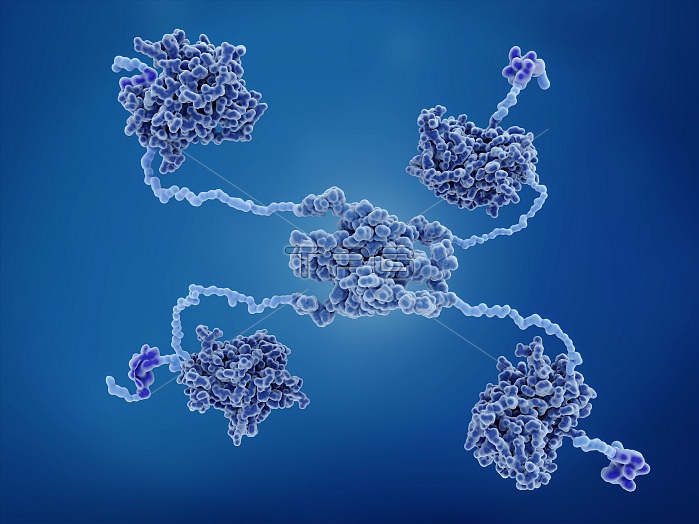
Anti-cancer protein p53. Molecular model of the anti-cancer protein p53 (also known as tumour protein 53, or TP53). This protein's action at the cellular level plays a role in repairing DNA (deoxyribonucleic acid), and can be activated by and work against oncogenes (genes that promote cancer). It can also initiate cell death if the DNA damage is too great. p53 works by binding to DNA in cell nuclei, and may be used in anti-cancer treatments. Mutations in p53 are thought to contribute to around half of human cancer cases. The structure here shows: four DNA binding domains (dark blue), four transactivation domains (purple-blue, corners), flexible arms (light blue), and a tetramerization domain (centre).
| px | px | dpi | = | cm | x | cm | = | MB |
Details
Creative#:
TPG29042605
Source:
達志影像
Authorization Type:
RF
Release Information:
須由TPG 完整授權
Model Release:
N/A
Property Release:
N/A
Right to Privacy:
No
Same folder images:

 Loading
Loading